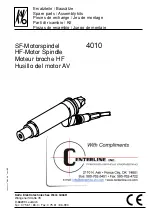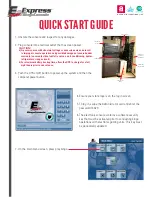
4 – Control Surface Modes and Operation
TASCAM FW-1082 Owner’s Manual
23
Programming Faders
The eight channel faders, as well as the master fader,
can all be reprogrammed. To display the pro-
grammed message for a fader, simply touch the fader
and the Control Panel shows something like Figure
4.8:
When you touch the master fader, you will see that its
programming information does not include bank
information since it is a single, global control that is
active in all banks.)
Selecting the MIDI output(s)
The FW-1082
has two physical MIDI outputs (
1
and
2
) and two vir-
tual MIDI outputs which appear as MIDI sources in
your DAW, but have no physical port (
VP1
and
VP2
).
• Check or un-check the four
Port
boxes to select or
de-select the corresponding MIDI outputs for the
fader. MIDI messages generated by the fader that
you are programming are sent to each port whose
box is checked. Uncheck all four ports to make a
key inactive.
Setting the MIDI channel
All MIDI messages
from this fader must be on the same channel.
• Use the up and down arrows of the
Channel
indica-
tor box to change the MIDI channel or type in a
MIDI channel number from 1 through 16.
Selecting the MIDI controller
Use the up and
down arrows of the
Controller
indicator box to
change the MIDI controller number. Alternatively,
you can type in a MIDI controller number from 0
through 127.
Faders send continuous controller messages only, so
the
Note On/Off
and
Toggled Controller
options
on the FW-1082’s Control Panel are disabled.
Banking
You can use the
h
BANK
y
keys to shift through
the four banks of controls.
Only the channel strip controls—faders, channel
MUTE, SOLO and SEL keys—are bankable. All
other surface controls are unaffected by the banking
commands.
For specific information on the FW-1082’s MIDI
Control Protocol, refer to the documentation supplied
on the CD-ROM.
Monitor Mix Mode – (General Notes)
The FW-1082 can be used as a stand-alone mixer in
MON
MIX
mode. The primary benefit of this mode is
to provide a means of monitoring your audio inputs
in a zero-latency environment.
By using
MON
MIX
mode to monitor the audio at the
inputs along with the audio return from your DAW
application, it is possible to overdub tracks to your
DAW software with none of the audio processing
delays inherent in DAW applications.
Figure 4.8: Programming faders
Summary of Contents for FW-1082
Page 35: ......














































